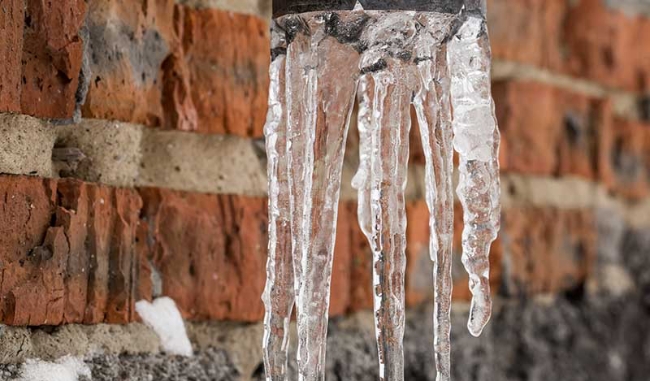Avoiding Your Pipes from Cold Weather: Effective Tips
Avoiding Your Pipes from Cold Weather: Effective Tips
Blog Article
What are your ideas with regards to Helpful Tips to Prevent Frozen Pipes this Winter?

Winter can ruin your pipes, specifically by freezing pipes. Below's just how to avoid it from occurring and what to do if it does.
Intro
As temperatures drop, the danger of frozen pipelines increases, possibly causing costly fixings and water damage. Comprehending exactly how to stop icy pipes is essential for homeowners in cool climates.
Prevention Tips
Protecting prone pipes
Cover pipelines in insulation sleeves or use warmth tape to protect them from freezing temperatures. Focus on pipelines in unheated or exterior locations of the home.
Heating methods
Keep interior spaces appropriately heated, particularly locations with pipes. Open up cupboard doors to allow cozy air to distribute around pipes under sinks.
Just how to determine icy pipes
Look for lowered water flow from taps, unusual smells or sounds from pipes, and visible frost on revealed pipes.
Long-Term Solutions
Architectural changes
Take into consideration rerouting pipelines away from exterior walls or unheated locations. Add extra insulation to attics, cellars, and crawl spaces.
Upgrading insulation
Invest in top quality insulation for pipes, attics, and wall surfaces. Correct insulation aids maintain consistent temperatures and lowers the risk of frozen pipes.
Shielding Outdoor Plumbing
Garden pipes and exterior faucets
Disconnect and drain pipes garden hoses before winter. Set up frost-proof faucets or cover outdoor faucets with protected caps.
Recognizing Icy Pipes
What causes pipes to ice up?
Pipelines ice up when exposed to temperatures below 32 ° F (0 ° C) for extended periods. As water inside the pipelines ices up, it increases, taxing the pipe walls and possibly triggering them to burst.
Threats and damages
Frozen pipes can lead to supply of water interruptions, residential or commercial property damage, and pricey repair services. Burst pipes can flood homes and trigger considerable structural damage.
Indications of Frozen Piping
Determining icy pipes early can stop them from rupturing.
What to Do If Your Pipelines Freeze
Immediate activities to take
If you suspect frozen pipelines, keep taps open to relieve pressure as the ice melts. Use a hairdryer or towels taken in warm water to thaw pipelines gradually.
Conclusion
Protecting against frozen pipes requires positive procedures and fast actions. By understanding the reasons, signs, and safety nets, house owners can shield their pipes throughout winter.
5 Ways to Prevent Frozen Pipes
Drain Outdoor Faucets and Disconnect Hoses
First, close the shut-off valve that controls the flow of water in the pipe to your outdoor faucet. Then, head outside to disconnect and drain your hose and open the outdoor faucet to allow the water to completely drain out of the line. Turn off the faucet when done. Finally, head back to the shut-off valve and drain the remaining water inside the pipe into a bucket or container. Additionally, if you have a home irrigation system, you should consider hiring an expert to clear the system of water each year.
Insulate Pipes
One of the best and most cost-effective methods for preventing frozen water pipes is to wrap your pipes with insulation. This is especially important for areas in your home that aren’t exposed to heat, such as an attic. We suggest using foam sleeves, which can typically be found at your local hardware store.
Keep Heat Running at 65
Your pipes are located inside your walls, and the temperature there is much colder than the rest of the house. To prevent your pipes from freezing, The Insurance Information Institute suggests that you keep your home heated to at least 65 degrees, even when traveling. You may want to invest in smart devices that can keep an eye on the temperature in your home while you’re away.
Leave Water Dripping
Moving water — even a small trickle — can prevent ice from forming inside your pipes. When freezing temps are imminent, start a drip of water from all faucets that serve exposed pipes. Leaving a few faucets running will also help relieve pressure inside the pipes and help prevent a rupture if the water inside freezes.
Open Cupboard Doors
Warm your kitchen and bathroom pipes by opening cupboards and vanities. You should also leave your interior doors ajar to help warm air circulate evenly throughout your home.

We had been shown that article on Helpful Tips to Prevent Frozen Pipes this Winter through a friend on another web blog. Liked our blog? Please share it. Help someone else find it. We appreciate your readership.
Get A Quote Report this page